January storms lashed a hilltop cattle feedlot at J Ranch in Point Reyes National Seashore. Tons of E. coli, ammonia, and nitrogen laden manure liquified and flooded downhill across a popular hiking trail, splashing into Kehoe Creek, which drains into the Pacific Ocean.
A hiker photographed the catastrophe and emailed the evidence to Park Superintendent, Craig Kenkel, and regional Water Quality Control Board manager, Xavier Fernandez.
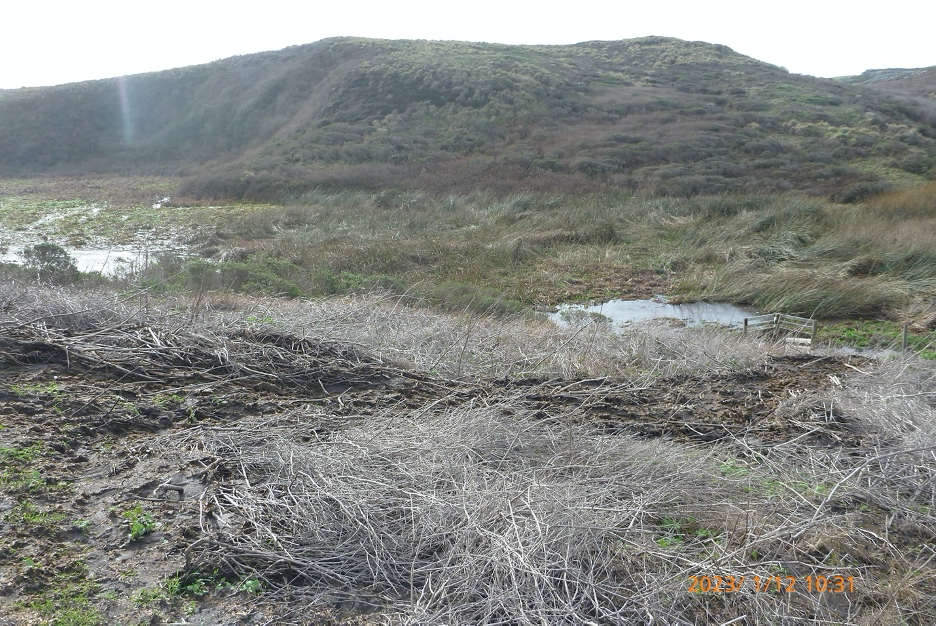
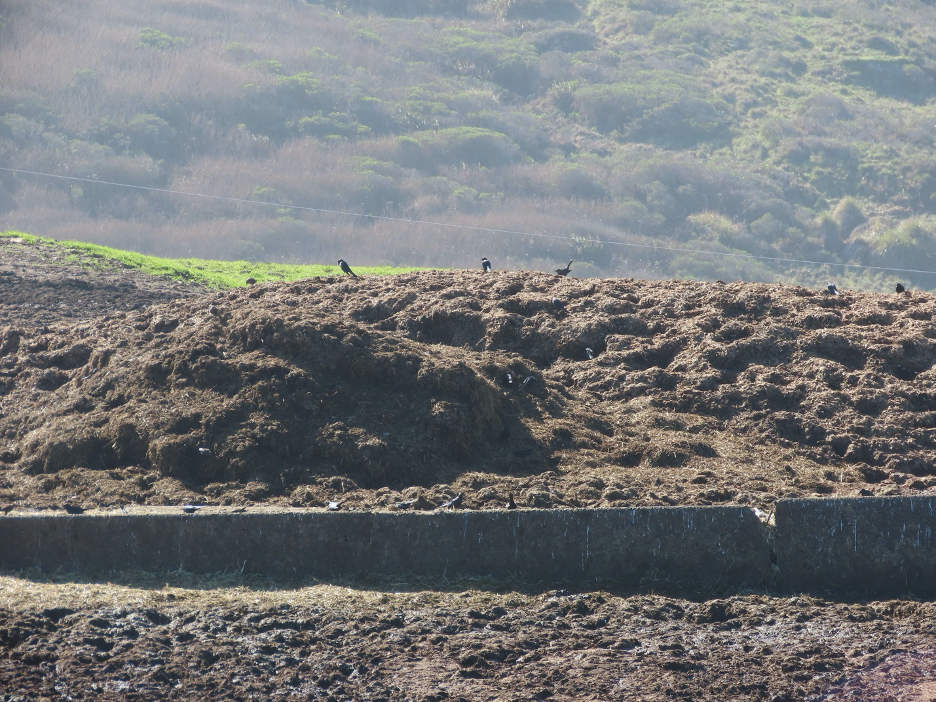
The Park Service ordered J Ranch lessees, Tim, Tom and Mike Kehoe to limit the damage. The ranchers staked a dozen burlap tubes stuffed with straw across gullies cut by the manured storm waters. In an email, Fernandez characterized the tubes as “erosion and sediment control measures.”
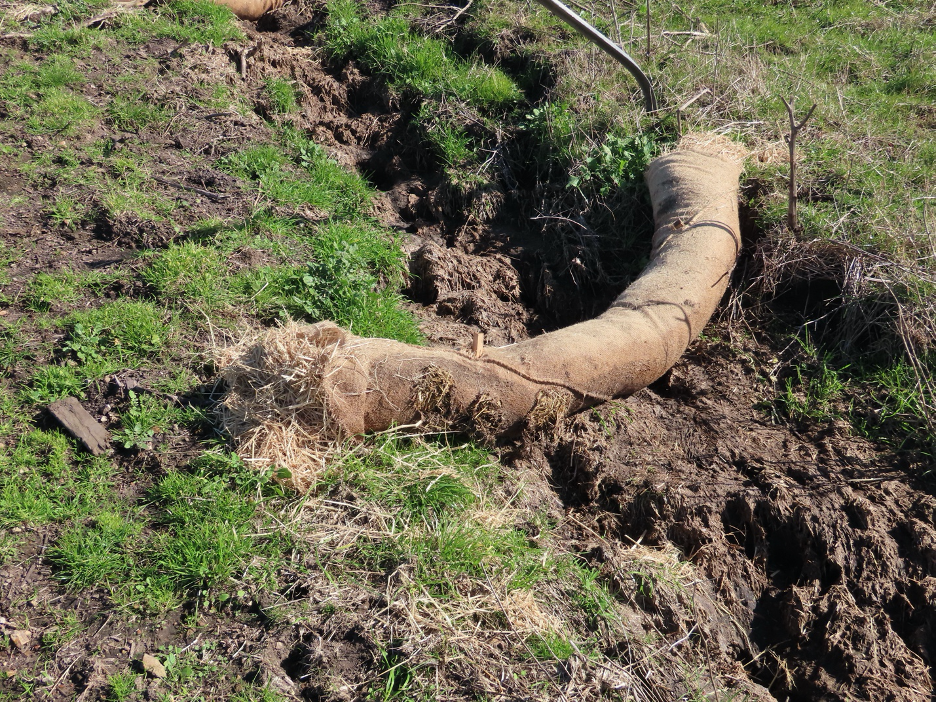
Neither Fernandez, Kenkel, nor the ranchers commented on why the mass of manure abutting a cow feeding trough was allowed to be uncontained. Seashore ranch leases and environmental regulations prohibit pollution of waterways from agricultural activities.
Fernandez initially told this newspaper, “The Park Service conducted their first week of bacteria samples during this time, and there were no indications that excess sediment or manure was directly discharged to [Kehoe] creek.” Responding to a request for the water testing data, Fernandez replied, “I have a correction to make. We do not have data from the Park Service from the monitoring that they conducted during storms in January.”
Kenkel did not respond to requests for the testing data.
Manure Thickens, Seals Die
Recent water quality tests sponsored by Turtle Island Restoration Network reveal life-harming levels of fecal bacteria and other agricultural waste in Kehoe Creek and throughout the park. Ten miles south of Kehoe Creek, these tests registered excessive concentrations of life-harming bacteria, ammonia, nitrogen and phosphorus in waters streaming through B Ranch cow pastures onto a plastic and construction debris-strewn beach on Drakes Bay. During January, the beach and stream were inhabited by pregnant elephant seals; the mammals have migrated to Drakes Bay beaches to give birth since time immemorial.
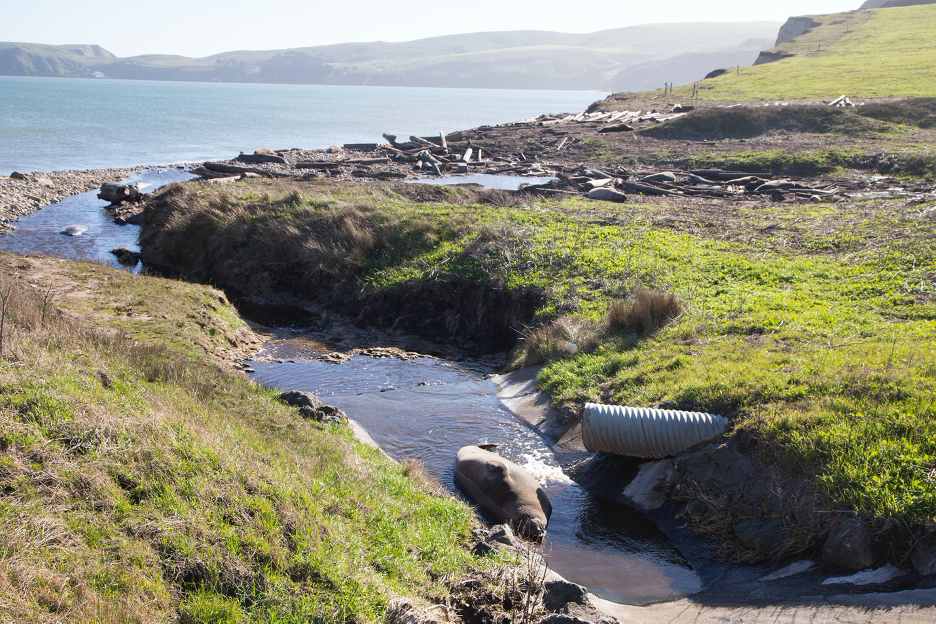
In a statement prepared for this newspaper, Greg Sarris, chairperson of the Federated Indians of the Graton Rancheria, which co-manages the park, observed, “The seals are being sickened, and even dying, as a result of excess manure flowing to their habitats.”
Sarris suggested, “The dairymen might consider building a fence to keep the seals from areas greatly affected by the pollution flow.”
On Jan. 25, Rep. Jared Huffman sent a letter to Kenkel supporting Park Service “measures to prevent the seals from hauling out or pupping in areas where there is a need to remediate water quality problems, and measures to temporarily prevent cattle from grazing in areas where the seals are present.”
Neither Sarris nor Huffman nor Kenkel nor Fernandez explained how many seals are sick and dying, nor how building more fences would help them. The agricultural pollution of the water table at B Ranch and throughout Point Reyes goes back decades; these flows cannot be stopped by wire fences. B Ranch has a history of dumping human sewage into the pastures.
Noaki Schwartz, spokesperson for the California Coastal Commission, another agency with jurisdiction over the Seashore, commented, “We were all surprised and frankly disgusted to hear about the discharge of agricultural waste into sensitive marine areas and have been looking into everything we can do to address it and prevent it from happening again. We are actively engaging with all the agencies with a relevant regulatory role to play in these areas and have spent the past week coordinating with them to figure out how best to proceed, both in the immediate and long term,” Schwartz stated.
In a Feb. 3 letter to Huffman, Kenkel stated, “The elephant seal use of Drakes Beach has dramatically increased in the last seven years, bringing the seals into contact with areas below active dairies.”
In an email to this newspaper, the Marine Mammal Center noted, “Proposed next steps include ongoing surveillance of pups at Point Reyes National Seashore for the presence of pathogens and antimicrobial resistance that may be linked to exposure to agricultural runoff or other anthropogenic factors.”
According to Joseph Sanchez, an elder of the Coast Miwok Tribal Council of Marin, “The degradation of the land, and officialdom’s disregard for the ecology of Point Reyes National Seashore, has been going on since the ranchers were paid millions of dollars to leave in the 1970s and did not leave. The elephant seals were here long before our ancestors, who were caretakers of the land. The streams were clear, and the salmon were running. The Tribal Council advocates for restoring Point Reyes to its native state without the presence of ranching.”
In 2020, a National Park Service environmental study determined that “impacts on water quality would be noticeable, long term, and beneficial” by eliminating ranching from the grossly polluted Seashore park.
Nevertheless, the Park Service, with Huffman’s legislative support, is attempting to subsidize and expand the reach of environmentally destructive cattle and dairy ranching at Point Reyes, even though the general public and many scientists are strongly opposed. The Park Service is currently mediating a lawsuit brought by three national environmental groups petitioning to protect endemic wildlife and plants by removing ecologically harmful private ranching businesses from the Park.
FEB. 7, 2023 EDITOR’S NOTE: This story has been updated to reflect new information since it was first published online.

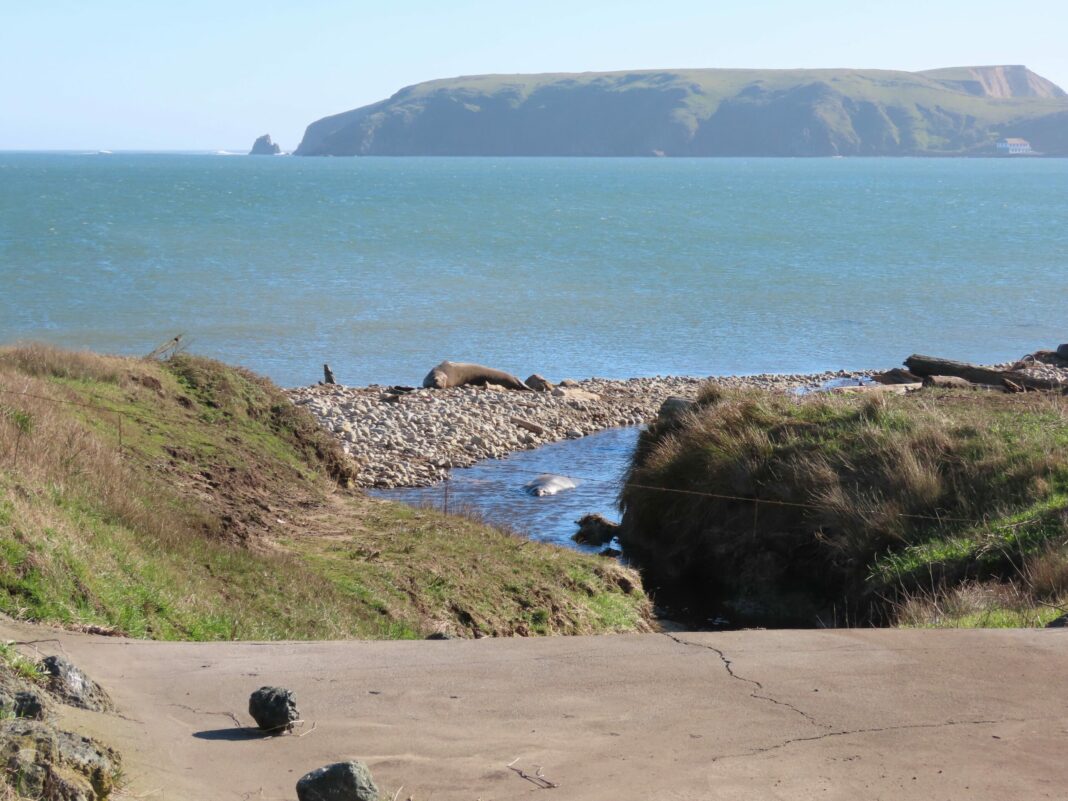










Excellent reporting Peter; you seem to be the only one saying the ranchers must leave PRNS as they were bought out more than 50 years ago & were given short term lease. The NPS is at fault for extending leases. Thank you Peter for staying with this. Joyce
I’ve been reading about this issue for the past several years – its been very well hidden from the public up to now. I’m sure anyone visiting this Park is well aware of the pollution & manure – likely stench from too many cows. Why is there no one complaining publicly? The fact (FACT) that drainage – e coli – is running into the ocean would seem to me something that the local politicians should be concerned about. But I guess that all depends on the benefits they receive from the sainted livestock industry.
Whats being done to the wildlife is another whole mess.
When I visited Point Reyes National Seashore in 2002 for the first time after moving to Marin from Germany, I was appalled by the looks and smell of the cattle ranches I saw, and I didn’t understand how they fit into the picture of a Natural Park. Many years later, I learned more about these ranch’s history, and I am saddened to see that my first impression was correct. Becoming aware of the suffering and dying of pregnant elephant seals and tule elks due to poisoned water or lack of water shows that ranches are not operating in a respectful and considerate manner of their environment. Unfortunately, it is another example of how former settlers keep using, misusing, and destroying the natural world while doing business. This is not sustainable. If ranchers keep on violating the rules of good stewardship, they should be forced to stop operating. Thanks for the report!
Thanks Peter for keeping this disgrace in the public realm.
How many years will our “environmental stewards” aka public agencies continue to turn a blind eye to this destruction of our National Park? Hard to believe this goes back to JFK’s dedication! You deserve more than a Pulitzer for your outstanding work!
What can we do to eliminate this and prevent Big Agriculture from expanding up to Bodega Bay where they have their sights on the Jenner Headlands and other precious areas?????